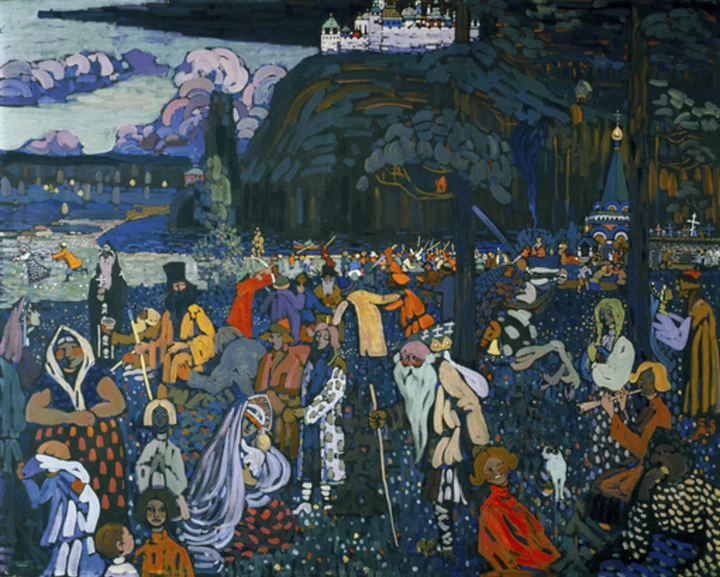BERLIN (AP) — An independent German commission on Tuesday recommended that a painting by Wassily Kandinsky currently owned by the Bavarian state bank be returned to the heirs of a Jewish family that originally owned the piece of art.
The commission can be called on in cases of disputes over the restitution of Nazi-confiscated cultural property, especially Jewish property.
In the case of the heirs of Hedwig Lewenstein Weyermann and Irma Lewenstein Klein versus Bayerische Landesbank, the commission advised that the 1907 painting “The Colorful Life” by Russian artist Kandinsky be returned to the heirs.
The commission’s recommendations are non-binding but are mostly followed by the parties once they have agreed to call on it to resolve the conflict.
The large tempera painting shows a group of colorfully clad people on a lawn, some eating or playing music, while others seem to be dancing.
In its conclusion, the commission says that from November 1927, the painting belonged to Hedwig and Emanuel Albert Lewenstein, a Jewish couple living in Amsterdam, and was part of their extensive art collection. The painting was auctioned off on Oct. 9, 1940 — just a few months after Germany's Wehrmacht occupied the Netherlands — at an auction house in Amsterdam.
Before the auction, the piece had been on loan from the Lewenstein family to the Stedelijk Museum in Amsterdam, from where it was taken on Sept. 5, 1940 by order of the art dealer Abraham Mozes Querido, the commission said in a statement.
“Despite years of research," the commission said it was unable to trace the path of the painting.
“It cannot be proven on whose initiative the painting was sold as part of the Lewenstein estate to the auction house Frederik Muller & Co. at the auction,” the commission said.
It added that the art piece was acquired by Salomon B. Slijper, whose widow sold it to Bayerische Landesbank in 1972 for 900,000 Dutch guilders. Since then, it has been on loan to the Staedtische Galerie im Lenbachhaus and Kunstbau museum in Munich.
At the time of the 1940 auction, the children of Hedwig and Emanuel Albert Lewenstein — Robert Gotschalk Lewenstein and Wilhelmine Helene Lewenstein — had emigrated to the United States and to then-Portuguese colony of Mozambique, respectively.
Only Irma Lewenstein Klein remained in Amsterdam — she was Robert’s separated wife. She survived the Nazi occupation and World War II.
In the dispute over the painting's ownership, the Bayerische Landesbank suggested that Irma Lewenstein Klein had put up the painting for auction in connection with her divorce settlement.
The claimants, however, were of the opinion that the auction of the painting took place in connection with the Netherland's occupation by the Nazis and the systematic persecution of the Jewish population that followed.
After studying the historic evidence, the commission concluded “the painting was seized as a result of persecution. The Lewenstein family and Irma Lewenstein Klein were persecuted as Jews" from the beginning of the German occupation of the Netherlands in 1940, it said.
“There is no evidence to support the assumption that Irma Lewenstein Klein arranged for the painting to be handed over of her own free will,” the statement added.
There were no immediate reactions by the heirs or the Bavarian state bank.









